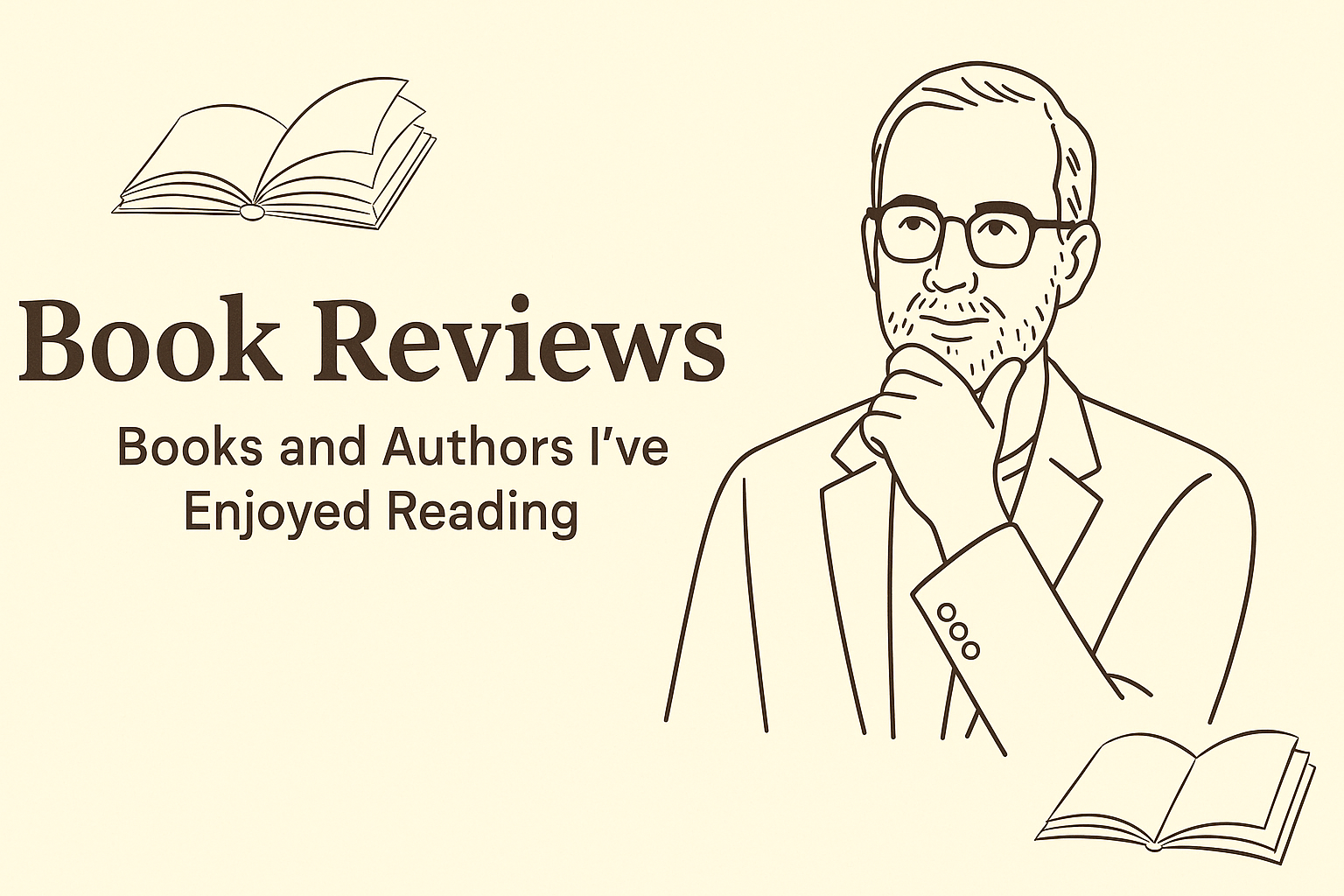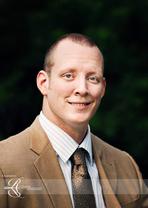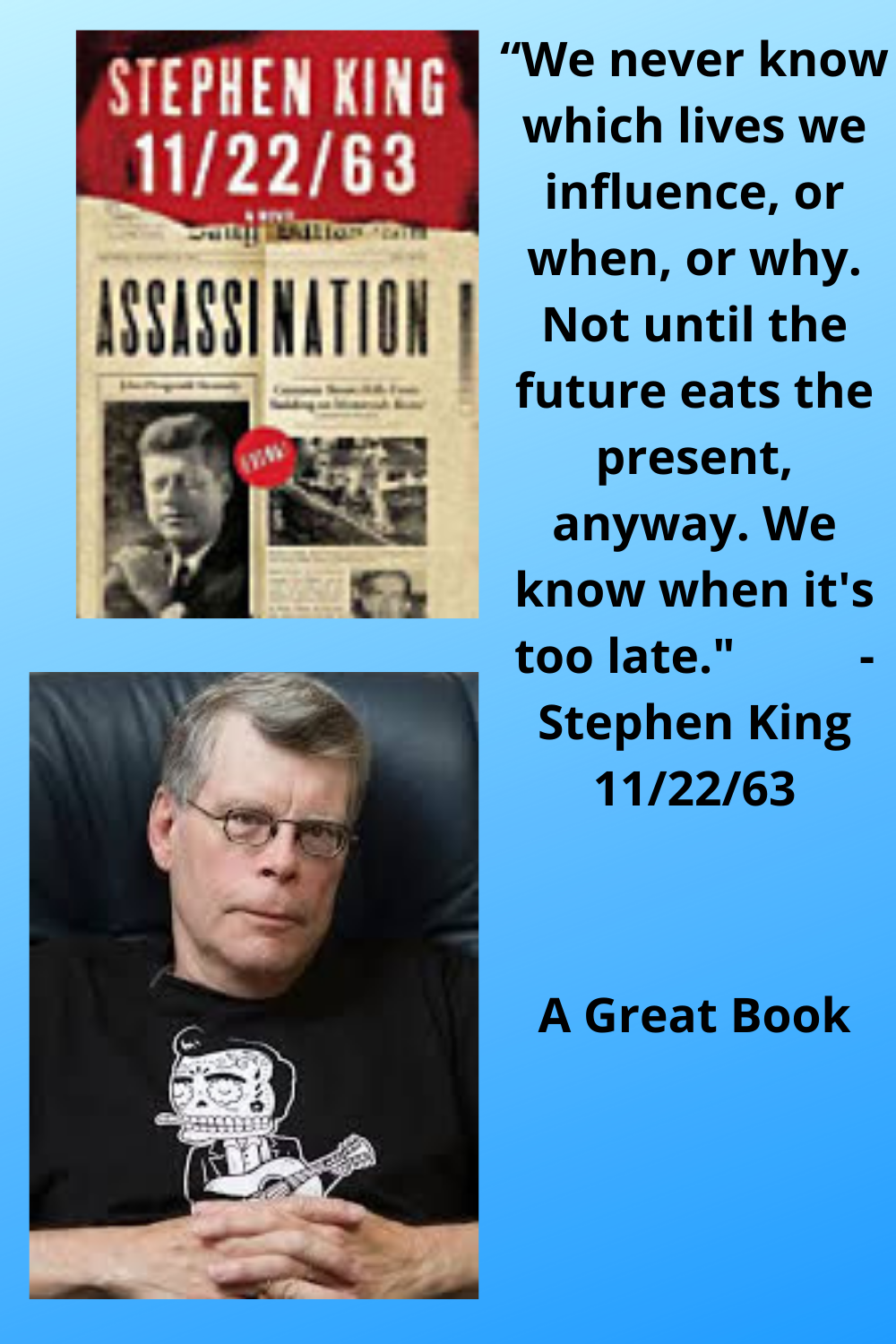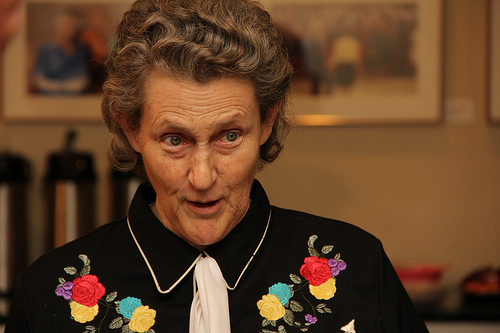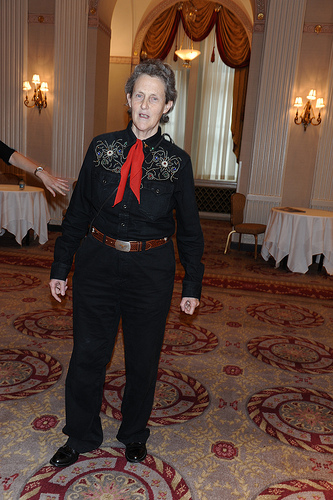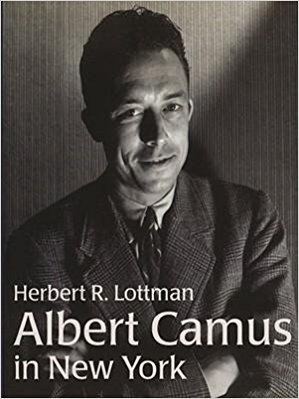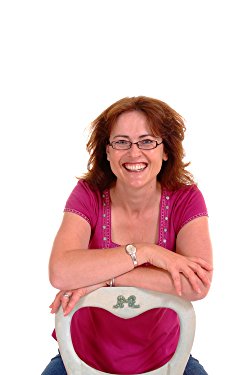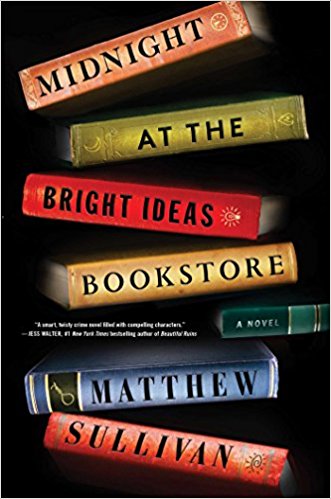The World's Strongest Librarian, by Josh Hanagarne
Josh Hanagarne’s memoir has several stories that are told with real candor and humility. As a young boy he learned to love books and going to the library it was always a reward. His first crush was Fern, from Charlotte’s Web. His love of reading provided escape from the teasing by his schoolmates over his tics, spasms and blinking.
When he was in the fifth grade his mother, who had never interfered with his reading choices, was concerned over a Stephen King's novel Misery that he was reading. She asked him to not read that author for a few years. He found another book, "The Color of Her Panties, by Piers Anthony" the was the same size and he swapped the dust jackets, but the one he used was even more alarming to his mother and he got caught.
His parents were committed members of the LDS Church. Church has filled much of his life even to the point of going on a mission, but he has had a life long struggle with the religion.
His biggest problem is an extreme case of Tourette’s syndrome. His mission, his first love, and his desire for a college education, were marred with the need to blink, bark, and hoot. Independent tics still haunt him and trigger uncontrolled noises and disconnected movements, which can be distressing and painful. He has his own name for his problem and refers to the visits as being from “Miss Tourette’s” or from “Misty”.
Josh has a big body at 6' 7". Weight training was something that helped him get away from “Misty”. The more he lifted and harder he worked the longer she stayed away. The work in finding this solution was another sub story within his life.
He is a librarian at Salt Lake City’s public library, where "Misty" has little influence. Hanagarne is quite passionate about libraries and about his family. Since Tourette’s has a genetic component, he worries about his young son.
The book is filled with the way the writer copes and his often-imaginary discourse with “Misty” is inspirational. He life in the Mormon community offers some insights into the workings of the church. The book offers some hope and insight and hope into a life shared with Tourette’s.
Quotes by Josh Hanagarne,
“At its loftiest, a library's goal is to keep as many minds as possible in the game ...”
“The library has a robust collection of what I call non-cuddly hate lit. This is one of my favorite things about working here: If you believe censorship is poison, here lies paradise.”
Nothing to Envy, Ordinary Lives in North Korea by Barbara Demick →
Barbara Demick wrote “NOTHING TO ENVY, Ordinary Lives in North Korea”. This was the result of her work and research as a foreign correspondent for the Los Angeles Times. She spent 7 years assigned to Korea. She chose her subjects from a single town, Chongjin. This was as far North from Pyongyang as you could go. She interviewed over 100 people but settled on detailing the lives of 6 people and their families, all from Chongjin. She covers the history of Korea back to the Korean War and before and what stands out is how little anything has changed in North Korea.
She writes of children who were forced to sing praise for the Great Leader and had nothing. They lived on grass, bark, and whatever they could beg and steal. The Great Famine in the 1990’s killed millions. Death by starvation was common and the people just lived with it as a fact of life.
Mi-ran, was a girl from a poor family who became a teacher. Mi-ran’s relationship with Jun-sang, a university student, lasted 13 years before she left for South Korea without him. Mrs. Song had always been a true party believer. Her daughter, Oak-hee, was not a believer and was a real rebel. Dr. Kim was a female physician, and Kim Hyuck was a boy alone with no family who had survived alone on the streets. They all eventually made it to South Korea and told their stories to Demick.
When Dr. Kim crossed a river into China she saw that dogs in China eat better than human beings in North Korea. The day to day life, living with physical challenges ,and the psychological pressure of living under a totalitarian regime, where just saying the wrong word might be overheard and could result in imprisonment or death, were made very real.
Demick shows the state of mind of each of her subjects, what their daily life was like, how they coped, and eventually how each escaped. She also reveals her subjects struggling, sometimes unsuccessfully, to adapt to life in South Korea. China and Mongolia both played roles in these people escaping to South Korea.
Even today North Korea, seen at night by satellite, is just a dark place with little electricity. Not much has changed, but the military presence has changed and today more than ever this is an important book.
“North Korea was, at least thru 2009, the last place on earth where virtually everything is grown on collective farms. The state confiscates the entire harvest and then gives a portion back to the farmer.”
― Barbara Demick,
11/22/63 Stephen King, A Novel →
Jake Epping, a recently divorced English teacher, spends a lot of time at a local diner, owned by man named Al, and spends a lot of time just talking with while he is there.
He tells Al of his friend who is dying of cancer because of a lifetime of smoking and they talk about the country. Al shows Jake a wormhole, time portal, in the storeroom that will allow him to go back in time and convinces Jake to use it to stop the assassination of President John F. Kennedy in 1963. The plan is to go back and spend 5 years carefully learning and, of course, not disturbing the future. When he goes back to 1958 he visits his sick friend, only to find that he and the whole family are heavy smokers even then
Jake takes on a new identity. He is more positive and happy in this new reality. He finds someone he loves, but he continues to wait for the opportunity to change the present, by changing the past.
Partially because I remember those years, but more because of King writing talent, I really felt like I was looking down familiar street. Watching the Oswald family from a rented room across the street, just made you believe you were there looking out the window.
Jake wants to find Lee Harvey Oswald and learn more about what happened. He wonders if Oswald was just a patsy.
The story is one of action, romance, drama, and even some humor. The characters make the story, and the story doesn’t really wander from the historical time line. This is no different than other great novels by Stephen King, you just can’t put it down.
Quotes
“Life turns on a dime. Sometimes towards us, but more often it spins away, flirting and flashing as it goes: so long, honey, it was good while it lasted, wasn’t it?”
-Stephen King 11/22/63
“We never know which lives we influence, or when, or why. Not until the future eats the present, anyway. We know when it's too late." -Stephen King 11/22/63
Stuff Matters, Marvelous Materials that Shape Our Man Made World, by Mark Miodownik
What "Stuff Matters" is about is explained by the subtitle: Exploring the Marvelous Materials that Shape Our Man-Made World.
From this book about “Stuff” you learn that things like glass, plastic, concrete, chocolate and other materials that they are much more than you thought. You can get a pre-look at how excited the author is about these things by the table of contents. Indomitable, Trusted, Fundamental, Delicious, Marvelous, Imaginative, Indivisible, Unbreakable, Refined, Immortal, and Synthesis are chapters that look deeply into the materials they discuss.
The book’s approach seems to be rooted in the authors experience as a young boy standing on a train bleeding from a stab wound. He had been chased, by a person who had just asked him for money, barely making it to the train when his attacker slashed the back of his coat with a razor bade wrapped with tape so that it could be used like a knife.
Later at the police station he had a chance to see the razor knife. He was fascinated that it could have cut through his leather coat and shirt to cut his back. This event became birth of the authors obsession with materials. He noticed steel everywhere. He wanted to know how it was made and what made the razor blade so strong and was fascinated with the miracle of alloys and why hammering a metal makes it stronger.
He claims the he looked deeply into the material word to show that the materials are really complex expressions of human needs and desires. The author said that “In a very real way, then, materials are a reflection of who we are, a multi-scale expression of our human need and desires.”
If your even curious to look closer at things like concrete, glass and foam then he brings some passion and a softer writing style. You will find some surprises. If you’re not so interested, then maybe a book about Stuff Matters isn’t for you
The author received his Ph.D in turbine jet engine alloys from Oxford University, and has worked as a materials scientist in the USA, Ireland and the UK. His focus has been on research that links the arts and humanities to medicine, engineering and materials science. That research lead to the establishment of the "UCL Institute of Making" where he is Director.
The Whistler by John Grisham
The Whistler by John Grisham
John Grisham continues to use his "formula for writing successful books" and it is still addictive. He has written about 30 legal thrillers. His books are just plain fun to read. Both Grisham and Stephen King are addictive authors.
"The Whistler" opens, of course, with judicial investigator Lacy Stoltz concerned about a judge on the take. A lawyer who went to jail and is now out is going to help. (this indeed is the formula but Grisham’s)
It is a story of racketeering that combines the uppity Gulf Coast society, some brilliant legal minds, and the old Catfish Mafia now evolved into the Coast Mafia. (No one weaves legal situations and the life in the Southeast better)
Lacy’s approach is to learn how bad the judge is. The answer is very bad, and the bad guys are getting away with murder. Thank goodness for a whistle-blower and those helping her who also have plans of their own.
I have read and enjoyed all of John Grisham’s books but not often have I reviewed his books. Knowing a little more about him can help. A story about him from January 2016 gives some insight into his career.
Bookends, a popular literary TV show, had John Grisham and Steven King as their main attraction. They have been friends for 25 years and you could feel the respect that they both had for each other both personally and professionally.
In this special they both shared a lot about their career. Grisham shared his experience in writing his first book, "A Time to Kill". He said he bought the first run of 1000 copies and then worked to sell them all himself. That was back in 1989.
John Grisham was a surprise and it was interesting to see how similar his and Stephen King's lives and careers had been. Similiar careers. Both started with a break on their first book. Both talented writers.
The Way I See It by Temple Grandin, PH.D.
The book, “The Way I See It” by Temple Grandin PH.D., is especially interesting, since the author has had her place on “the spectrum”, having autism since birth. Autism is a developmental disorder with different degrees of strengths and challenges. Individuals who are very close to the same place on the spectrum may react with very different levels of severity. Every person with autism is unique and that is why it is referred to as a spectrum disorder. The issues can range from problems of being nonverbal and challenges, that can include self-injurious behaviors and mental challenges, to the higher functioning level known as Asperger’s Syndrome. At the higher level of the spectrum people are often extremely intelligent and have expressive language skills.
Grandin says that she does not think in words but instead retrieves images from memory. She says she lacks social intuition and relies on logic to guide her behavior. She is a professor of animal behavior and well-known designer of livestock equipment. She credits her autism to her success in understanding animals.
The original title for this book was A Cow's Eye View and it was her observation of cattle's reactions in squeeze chutes that led her to design a squeeze machine that she uses daily to calm her anxieties. Her work with animals is fascinating and the book profiles much of her work.
A summary of the topics that the book looks at: 1.How and Why People with Autism Think Differently. 2. Economical Early Intervention Programs that Work. 3. How Sensitivities Affect Learning. 4. Behaviors Caused by a Disability vs Just Bad Behavior. 5. Teaching People with Autism to Live in an Unpredictable World. 6. Employment Ideas for Adults with Autism.
The book is not just interesting, it is helpful. If you read it you will likely find yourself looking for others books that Temple Grandin has written as I did.
The Gunslinger, The Dark Tower, by Stephen King
The Gunslinger is a novel by American author Stephen King that he began in collage in 1970. It was the first volume in what became the Dark Tower series. It was first published in 1982, bringing together five short stories that had been published between 1978 and 1981. The version in print today was revised again in 2003.
The Dark Tower is a series of eight books using multiple genres, including dark fantasy, science fantasy, horror, and Western. This first book should be important to understanding this body of work by Stephen King. His writing style and use of many different genres makes for an interesting Western, but it is a little confusing trying to understand why the Dark Tower is such an obsession in this first book.
The gunslinger’s obsession with the tower is more than just a physical one but is revealed with a great deal of metaphorical references. One of these that is memorable is "Go then, there are other worlds than these".
Roland Deschain, the last gunslinger, has been chasing "the man in black", for many years. Roland sometimes speaks in what is called “high-speech”. Perhaps this is due to his implied aristocratic state and the man in black implied state as a sorcerer and pure evil.
The book is a very unique and interesting Western. It was a slow read and harder to follow than what I expected from Stephen King.
Quotes from the Book
“where the world ends is where you must begin”
“The mystery of the universe is not time but size.”
“the man in black travels with your soul in his pocket.”
“Beyond the reach of human rage
A drop of hell, a touch of strange ...”
How to Think like Leonardo da Vinci, by Michael J. Gelb
Genius is made not born, and human beings are gifted with an almost unlimited potential for learning and creativity, according to Leonardo da Vinci.
Leonardo da Vinci, was the model for this book but it would be unfair to assume that everything in it is his wisdom and creative approach.
Michael Gelb added his own message, designed to compliment da Vinci ideas. He planned to use the ideas in the book for his own seminars and workshops. The book presents these as "the Seven Da Vincian Principles" for learning how to approach life like a genius.
The books goal is to enable us to uncover our own hidden abilities, sharpen our senses, and liberate our own unique intelligence by following and understanding the example of Leonardo da Vinci.
I think that goal was achieved with some of the chapters, but not all. For those fascinated with da Vinci the book will be a good experience. Some of the exercises and approaches in the book were unique. They alone make the book worth reading.
Albert Camus in New York, by Herbert R. Lottman
Albert Camus was a French-Algerian journalist, playwright, novelist, philosophical essayist, and Nobel laureate. He was born November 1913 and died in January 1960.
His first influential novel, The Stranger, was released at the same time that the Cultural Relations Section of the French Ministry of Foreign Affairs sent him on a trip to represent the French Government in the United States.
Camus' arrival in the United States had been anticipated by a full-page article in the New York Herald Tribune Weekly-Book Review. His book "The Stranger" was already in print in France under the name L'Etranger.
The book, "Albert Camus in New York" is like a chapter from Herbert Lottman's 848 page biography of Camus.
In the lectures he gave on his trip he was often asked about his philosophical point of view, which he labeled as "Absurd-ism". Sartre, an existentialist, had reviewed The Stranger and he was often confused with Camus by Americans.
Wherever Camus went he was asked if he was an existentialist. He didn't seem to like being asked and he always said no.
The meaning of existentialism suggests that each individual—not society or religion—is solely responsible for giving meaning to life. Moral values are abstractly contrived and do not exist otherwise.
Camus's Absurdism" refers to the conflict between the human tendency to seek inherent value and meaning in life and the human inability to find any. In this context absurdism does not mean "logically impossible", but rather "humanly impossible".
This small books gives some insight into where Camus was coming from overall.
The Stranger by Albert Camus is reviewed on this site. See November 5th 2017 post below
Albert Camus was a French intellectual and influential philosopher who was awarded the Nobel Prize for Literature in 1957.
The Silent Wife by Kerry Fisher
Kerry Fisher (above on the right) wrote a letter to this books reader, and it is located at the end of this novel. It tells us why she decided to write this story. She said, in searching opinion pieces and internet forums discussing what women were talking about, that the discussions came back, over and over, to the intricacies of family dynamics.
The story centers on two brothers who live next door to each other, across the street from their mother, Anna. Anna is the matriarch of the Farinelli extended Italian family. Lara is married to Massimo Farinelli and they have a son Sandro. Massimo is the older brother and has been married before. Their life looks perfect on the surface. Maggie is married to Massimo’s brother Nico. Maggie is the stepmother to their daughter, Francesea.
The book was originally titled “The Secrets of the Second Wives”. There is plenty of material here to discuss family dynamics, and indeed that is what the book does.
In Kerry’s letter she mentioned that she knew conflict was the “heart of a good novel”. The subject of “The Silent Wife” was indeed one of conflict.
The book has received good reviews and I thought it was well written. I found my own interest drifted as the story seemed to move slow. I wish I had read the letter from the author at the end first.
About the Author Kerry Fisher
Kerry Fisher was born in Peterborough, UK. She studied French and Italian at Bath University, and then worked for several years as an English teacher in Corsica and in Spain. Her Website is:
www.kerryfisherauthor.com
A Man Called Ove A Novel, by Fredrik Backman
Pictures of Fredrik Backman & Ove's Auto preferance the Saab
Ove’s story is heartbreaking, and it is very funny. It is filled with diverse characters, including the cat. Ove is Swedish and the story takes place in Sweden. It is a book you will not want to put down and one that will make you laugh out loud.
Both growing up as a child, and then later as an adult, Ove is described as a curmudgeon. He has strict principles, fixed routines and the image of a crusty old man who is ill-tempered, but this image is only true at first glance.
With a closer look you find that he has a heart of gold. Much of what is good in Ove was brought out by his wife, Sonji, who comes into his life and balances his pessimism with her optimism and warmth. She is really the opposite of Ove in most every way, but she is as dedicated to Ove as he is to her.
Driving a Saab is a litmus test for Ove and if you do drive one your more than ok. If you drive a Volvo, BMW or foreign car, it can be a reason for not speaking.
Ove’s wife dies, and it is heartbreaking. It takes a lot of time but it is a woman who again turns him around, for a second time. Parvaneh moves, with her husband and children, next door. His relationship with their children is very touching.
The book is an exploration of how one life impacts so many others and is well worth reading.
About the Author
Fredrik Backman grew up in Sweden. He has been writing for Helsingborgs Dagblad and Moore Magazine in Sweden. His first book was "A Man Called Ove" and was published in 2012. It was adapted into a film which came out in December 2015.
Midnight At The Bright Ideas Bookstore by Matthew Sullivan
Lydia Smith really loves her job at the Bright Ideas Bookstore in Denver. She grew up in a library-based- home in this town about 20 years ago.
She had only two friends. Raj was a boy her age and Carol was her other friend. At a sleep over at Carol’s house, Carol and her parents were brutally murdered by the Hammerman. Lydia hid but it seemed like she was spared? The mystery of who the Hammerman was is still not solved, but things that happen at the bookstore and in Lydia’s life take her back to that mystery.
The bookstore is a second home to many of the area street people and Lydia feels a connection to them. She sees them as dreamers and refers to them as BookFrogs. One of the dreamers, Joey Molina, is a real mystery but it eventually becomes clear that he is part of a bigger picture that includes the mystery of her youth. Joey is in his early twenties. He loves books and he considers Lydia his only friend.
She is disconnected from her father and their relationship is an interesting part of the plot. Her childhood friend Raj comes back into her life and they try hard to understand the events they both shared growing up and what is happening now. They both become obsessed with who Joey really is.
It is a dark story with a twisted plot. The reviews I found on this book offer a lot of details that seem to be spoilers. The twisted plot is a delightful part of this book, so I have been hesitant to mention more of the events here. The book will pull you in and you will not want to put it down

